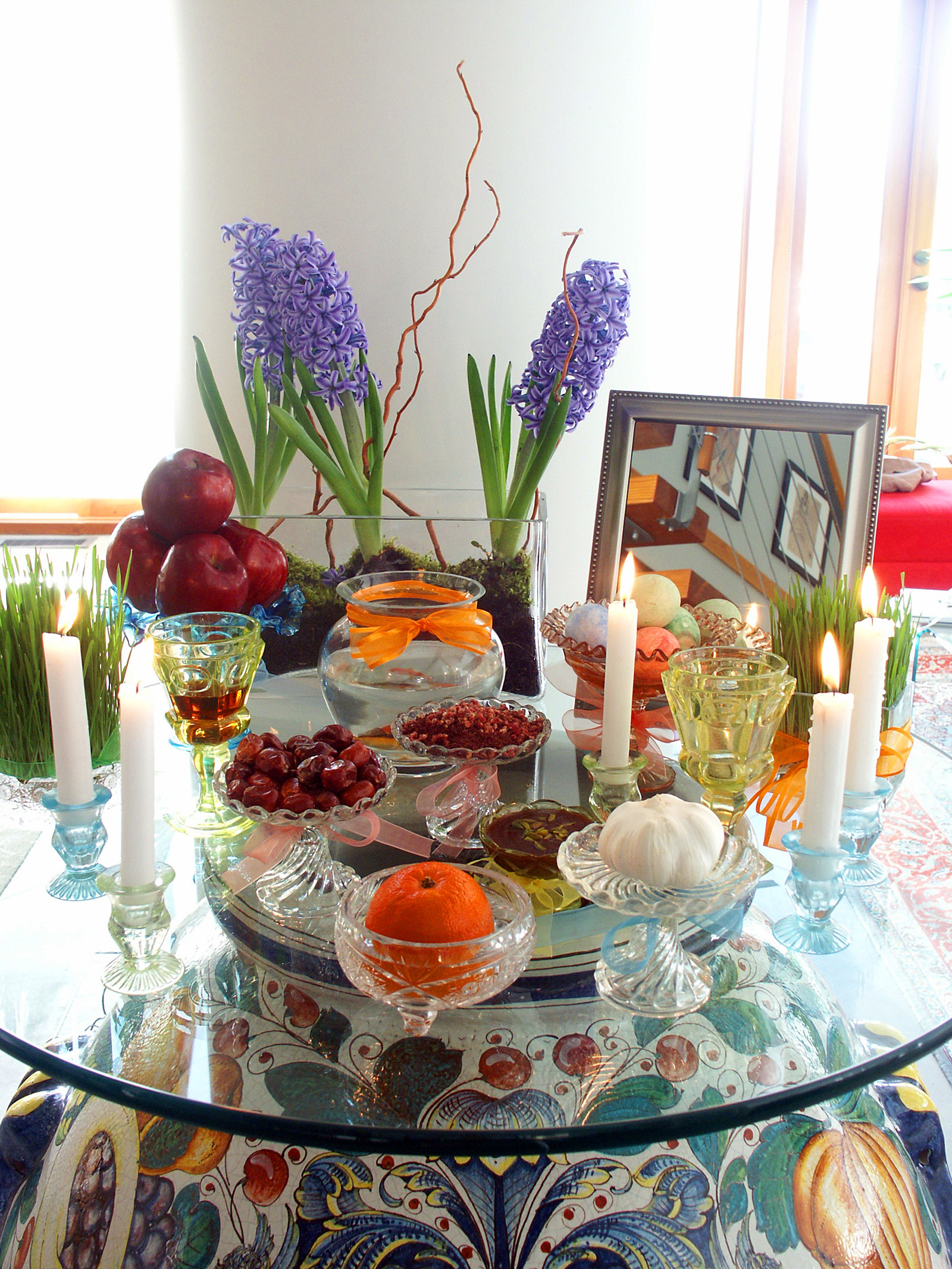Arman Sharif: Middle Easterners, so white that we’re invisible

The “haft-seen” spread commemorates Norooz, the Iranian New Year and first day of spring, with seven main items that symbolize prosperity for the year ahead. (Aristocrat/Flickr)
By Arman Sharif
March 29, 2016 11:49 p.m.
Your friends just left for Cabo to forget about their mediocre final exam grades while you’re at home, quietly sitting with your family, getting ready to usher in the spring equinox.
You may be an Iranian college student on spring break.
Norooz, the Iranian New Year and first day of spring, coincided with spring break this year. The holiday drastically differs from the conventional Jan. 1 spent in Times Square, with its emphasis on family and spending time at home.
But the cultural beauty and celebration of this unique holiday always comes in tandem with precaution. With these kinds of traditions, cultural differences of Middle Eastern students become more salient to their peers. As a result, some Middle Easterners appraise how “ethnic” they wish to present themselves, making the decision to either evade stigma and xenophobia, or tout pride in their heritage.
To avoid discrimination, the Middle Eastern community has often fervently sought to identify as white, both legally and in vernacular.
Whether it’s discrimination or just simple lack of an appropriate racial category, society hasn’t given Middle Easterners much of a choice in how they choose to identify.
During my college application process, along with thousands of other Middle Eastern students across the country, I was mandated to check off “white” on my college applications.
In the past, there have been campaigns spearheaded by student groups at UCLA to eliminate this invisibility. These campaigns’ efforts did bring about some improvement, with my class – the class of 2018 – being the inaugural class on the University of California application with the option to also indicate a second “UC ethnicity/ancestry,” such as Iranian. However, the collection of this data remains difficult to access, and U.S. Department of Education designation continues to trump all in what’s widely reported. DOE options dictate “white” for Middle Easterners.
At the federal level, the Middle Eastern community is also prone to underrepresentation on the U.S. census, with no option to indicate besides “white.” Campaigns have come about to encourage Middle Eastern communities especially to check off “other” and then write in an ethnicity.
Although Middle Easterners may be forced to identify as white, we’re not treated as such when hints of our accents being heard at the local supermarket solicit a “go back to your country.” We aren’t white when we’re detained at airport security for hours on family vacations. Whiteness didn’t come through to stop modern-day, discriminatory bills from breezing through chambers of Congress.
At the same time, Western constructions of race ideology haven’t exactly given us another choice to pick. A process of selective racialization occurs where the “good” or fun people in the community – like our city’s most prized possession, the Armenian Kardashian clan – will be perceived as white, whereas evil archetypes such as Osama bin Laden will undoubtedly not be.
Our lack of space creates the need for concrete support and outreach programs like a Middle Eastern admit yield event, intended for newly admitted freshmen to meet others in their community and become more likely to commit to UCLA. These would entail representation in the diverse array of Undergraduate Students Association Council initiatives that broach topics historically overlooked in our communities, such as sexual assault or mental health. Support can come in the form of retention programs – if the community experiences retention issues, we wouldn’t even know at this point from lack of data – and proportional financial allocations to relevant student, advocacy and cultural groups on campus.
While Middle Eastern communities should absolutely organize with other communities of color and have forged powerful solidarity in the past, they must continue to check their own privilege. In the realm of campus activism, there is an awkwardness as to whether the community fully fits into spaces for people of color, where it is understandably hesitant to align with the exact adversity and issues black or Latino communities have historically encountered at UCLA. In an attempt to create a community of their own, some students have tried to rebrand and decolonize from the colonial roots of the term “Middle Eastern,” employing terms such as SWANA, or Southwest Asian and North African.
Twenty Norooz celebrations later, I’ve realized that my community’s differences from others and its own internal diversity, cultural or otherwise, are worth celebrating. Omitting Middle Eastern identity – rendering it invisible – in lieu of whiteness erases this richness. It won’t matter if Southern California is comprised of vibrant ethnic enclaves like Tehrangeles a mile down Westwood Boulevard, which is the epicenter of the largest Iranian community outside Iran, if we continue to remain invisible.


